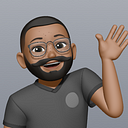Accessibility | Know your audience
A generic perception,
We would have heard the textbook definition of Web Accessibility, and in a nutshell, it's all about making the web a more inclusive place. People with disabilities must be able to use your site. Does that mean we throw in a bunch of aria-* attributes and use semantic HTML elements? and lo and behold, we have an accessibility-compliant website! Is that enough?
The product or service we are developing must reach maximum users. It should be usable and understandable by everyone. It should cater to the users and their various levels of abilities and capabilities. All these are very valid understandings of accessibility. Agreed.
But is it enough to master ARIA and semantic HTML to call me an expert? Accessibility is not just about scoring a 100 compliance score from the testing tools. It’s a lot more than that.
See the world again, this time with a different lens,
Accessibility is a vast, important and sensible topic everyone must notice and understand. Web Accessibility (WCAG, ARIA, semantic HTML, alt attributes…) is a small part of the larger family of Accessibility.
To understand the need for accessible services better, we need to understand our audience better. Know your targeted audience. Understand their needs, disabilities, abilities and capabilities better. Try to experience the world from their point of view.
The following videos and posts are very few of several sources out there, that give us a sneak peek of our world from the point of view of people with disabilities. They were a real eye-opener for me!
Assistive Technology in Action | PACER Center | YouTube
A playlist of people with different disabilities using assistive technologies to accomplish their daily tasks,
Jane Velkovski: The life-changing power of assistive technologies | TED | YouTube
The Try Guys Test Old Age Body Simulators | The Try Guys | YouTube
A fun but informative video of how our abilities reduce as we age,
Disability Employment Gap | Shani Dhanda, MSN | Global Disability Inclusion & Stacy Scott, LinkedIn
There are a lot more blogs, articles and videos available on real-life experiences of how people with disabilities use assistive technologies and accomplish their day-to-day tasks.
It’s not the same for all of us,
Just because something is easy for you to use and understand, doesn't necessarily mean it is the same for others as well.
People with dyslexia may find it hard to read and understand. A screen reader or text-to-speech app will be of use for them.
People with motor impairments will have trouble maintaining stability — in the case of computer apps, hard to maintain a stable cursor — support for switches or voice control will be of use.
For people with visual impairments — partial or total blindness — large fonts or screen reader support will be helpful; colour blindness — a good contrast ratio within content is helpful to read and understand.
People with limited hearing will find transcripts for audio or video content useful.
These are only very few samples of different people consuming digital content. Look around you and you’ll find many instances of people requiring assistance to achieve their everyday tasks, be it the specs we wear, the cane or walkers our grandparents use, the railings on steps, the ramp on an entrance, elevators, escalators, hearing aids, wheelchairs, braille and several more…
People around us need some form of assistive support. We could be one among them; if not now, it won’t be long before we need them. We must design and develop our products and services with accessibility in mind.
A worthy effort,
Learning and understanding about Accessibility is an endless journey of solving real-world, real-people problems. It will be worth your time and effort.
You may have loved ones with disabilities. Wouldn’t you want a better world for them where they can consume products and services just like you can? You might be in their position one day. An accident? A surgery? Heck! All of us will get old! Our abilities will be reduced due to certain or uncertain events in our life. And if we can’t use our own products and services, wouldn't that be bad?
Still a long way ahead,
I’m happy that people have started to recognise Accessibility and the need for accessible services. But there is still a long way ahead to make the world more accessible for all walks of people. It is our moral and ethical responsibility.
It is a journey of constant learning, awareness of the people and world around us, and upgrading our thought processes and solutions, to cater to the needs of an endlessly evolving world. It starts with understanding your users. Know your audience. It can help you build a better world, a better future.

